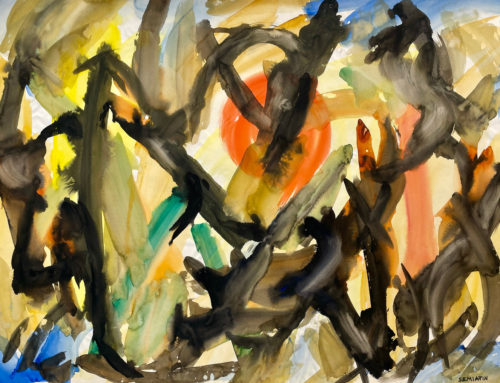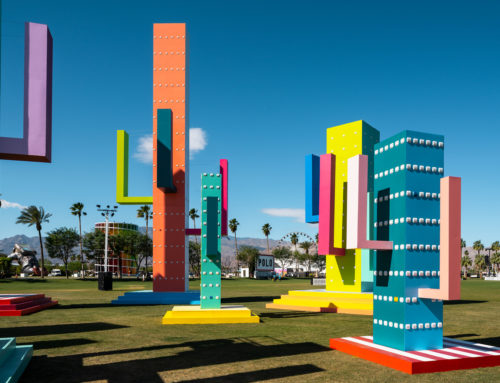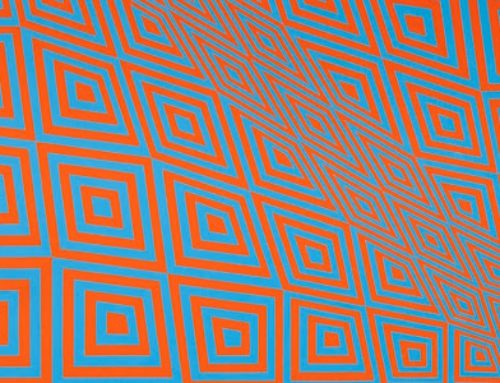It happened at UCR Palm Desert. Mark the day: October 12, 2017. This is when almost 100 Coachella Valley arts and tourism leaders, city planners, economic development directors, and of course visual and performing artists converged on the campus to learn how to engage a wider audience through creative placemaking, cultural tourism, and social media promotion.
The idea was to show how collaboration creates opportunities for artists and distinctive experiences for residents and visitors — and ultimately transforms our downtowns, parks, and other public spaces into attractive destinations.
“We have the creative and cultural assets and the geography to be a thriving, year-round arts district,” says Christi Salamone, CEO of the California Desert Arts Council, which organized the event with Americans for the Arts’ National Arts Marketing Project. “This program was a great first step to unify everybody around this goal.”
It’s a perfect time for the arts community to align with tourism. Last year, the Greater Palm Springs Convention and Visitors Bureau announced its goal to increase annual visitation from 12 million people to more than 16 million by 2026. The agency pinpointed arts and culture as one of the main drivers for that growth.

Ben Stone of Smart Growth America addresses Coachella Valley arts, business, civic, and tourism leaders at the CDAC workshop Big Strategies and Real Tactics for Connecting Artists, Audience, and Place at UCR Palm Desert. Photo by Gregg Felsen.
At the workshop, Ben Stone of Smart Growth America presented an overview of cultural tourism, emphasizing 76 percent of domestic tourists engage in cultural activities, and that cultural tourists stay longer and spend more in the destinations they visit. He also identified different types of cultural environments that tend to attract arts-loving visitors:
* Celebration
* Architecture and landscape
* Art production and galleries
* Music history
* Adaptive reuse and interpretation
Upcoming blogs will cover cultural clusters and districts, as well as marketing tactics for local and visitor audience development.
Here, we focus on creative placemaking. Stone clinically defined the concept, saying, “In creative placemaking, partners from public, private, nonprofit, and community sectors strategically shape the physical and social character of a neighborhood, town, city, or region around arts and cultural activities.”
Before his work with Smart Growth America, Stone was director of Baltimore’s Station North Arts and Entertainment District, a once-blighted area now bustling with artist live-work spaces, galleries, rowhomes, and businesses. His arts-based revitalization and placemaking strategy propelled the area into a nationally recognized creative hub while maintaining its diverse population of locals and visitors.
“My job was to get people to buy into the concept and work collaboratively,” says Stone, who designed the area’s revitalization around existing assets. “There are a lot of challenges that can be solved if addressed collectively. Working together brings down costs, promotes the [arts] district mentality, and drives audiences to the place.”
At the workshop, Stone described different elements of the revitalization plan, particularly the repurposing of existing spaces (adaptive reuse) and the Open Walls mural project.
To a degree, both of these ideas are already in play here. Last year, for example, Modernism Week located its Community and Meeting Place (CAMP) and hosted events in the vacant but historic 1958 J.W. Robinson department store building in downtown Palm Springs.
Similarly, the city of Coachella approved the use of the property near the library and senior center for nonprofit Raíces Cultura to collaborate with organizations to create community programming. Recent events include a clothing swap, sewing workshop, and open mic night. Its most popular collaboration is with Run for Los Muertos, an annual Día de Los Muertos run/walk and festival downtown.
The success of Modernism Week inspired the transformation of the north end of Palm Springs, known as the Uptown Design District for its offerings of modern furniture and design, fashion, and art.
Last year, the nonprofit Coachella Valley Art Scene partnered with Westfield Palm Desert to activate two spaces and curate the art for STREET, an art, music, food, and fashion event atop the mall’s parking structure. Artists also inhabit a pop-up gallery at the mall organized by the nonprofit organization Art Is, Inc.
Similar to Station North’s Open Walls, the desert has Coachella Walls, with murals painted by local and internationally based artists in walkable downtown Coachella. Organized by artist Armando Lerma and a curator who specializes in street art, the ongoing project has 11 murals on commercial and residential buildings, including the one Lerma created earlier this year for Desert X, the exhibition of site-specific artworks that drew more than 200,000 diverse visitors over three months.
Activating venues and commercial corridors revitalizes communities. It’s up to artists, community and neighborhood groups, city planners, and business associations to propose and realize events and programs that draw residents and visitors.
HOW TO BEGIN COLLABORATING
Join us December 7 for our monthly arts salon at Armando Lerma’s studio in Coachella, where we continue the conversation about creative placemaking, cultural tourism, and audience development. CDAC salons offer a great place to network and collaborate. Click to RSVP. Two questions to ask yourself before the salon:
• What do you need to support your mission and your work?
Examples: Connections to a wider audience, performers, press connections, space to exhibit, perform, or store equipment.
• What do you have to offer to others in the Coachella Valley?
Examples: rehearsal space, meeting facilitators, graphic and web design expertise, e-mail and social media lists.
RESOURCES
• Download speaker presentations
Creative placemaking
• NEA white paper on creative placemaking
Pop-up spaces
• Pop-Up City (Cleveland Urban Design Collaborative)
• Pop-Up Museum (Springboard for the Arts’ Creative Exchange)
Mural projects
• Porch Light Toolkit by Mural Arts







